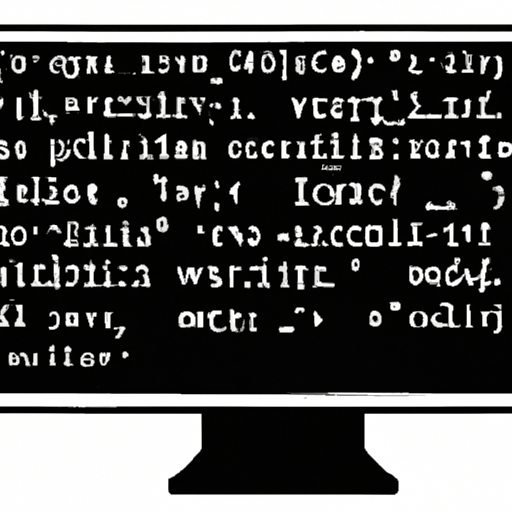Freeze[.]rs Injector Weaponized: A New Threat to Cybersecurity and How to Protect Yourself from XWorm Malware
The Freeze[.]rs Injector tool, originally for software security testing, is now being used by cybercriminals to launch XWorm malware attacks that can infiltrate networks undetected. It is important to implement a layered approach to security and take proactive measures to protect against injector-based attacks and XWorm malware. Organizations and individuals should keep software up to date, avoid suspicious links and downloads, use reputable antivirus software, implement strong passwords and two-factor authentication, and monitor for unusual activity.
As our reliance on technology continues to grow, so do the threats that come with it. The latest addition to the list of cybersecurity concerns is the weaponization of the Freeze[.]rs Injector, a tool previously used for debugging and testing software. This new attack vector has been combined with the XWorm malware, creating a dangerous new threat to individuals and organizations alike. In this article, we will delve into the details of this new threat and provide guidance on how to protect yourself and your business from these types of attacks.
- 1. “Freeze[.]rs Injector Weaponized: A New Threat to Cybersecurity”
- 2. “XWorm Malware: How It Works and How to Protect Yourself”
- 3. “The Rise of Injector-Based Attacks: What You Need to Know”
- 4. “Detecting and Responding to Freeze[.]rs Injector Attacks”
- 5. “Staying Ahead of the Game: Best Practices for Cybersecurity in the Age of Injector Weaponization”
1. “Freeze[.]rs Injector Weaponized: A New Threat to Cybersecurity”

The Freeze[.]rs Injector, a tool that was originally designed to help software developers test the security of their applications, has been weaponized by cybercriminals to launch XWorm malware attacks. This new threat to cybersecurity has been causing concern among security experts due to its ability to penetrate networks and remain undetected for extended periods of time.
The Freeze[.]rs Injector works by injecting malicious code into legitimate software applications, making it difficult for security software to detect the malware. This means that cybercriminals can use the tool to launch attacks that steal sensitive data, install ransomware, or even take control of entire networks.
One of the most significant risks of this new attack is the fact that it is highly adaptable. Attackers can use the Freeze[.]rs Injector to create custom malware that targets specific organizations or industries, making it challenging for security teams to defend against these threats.
To make matters worse, the Freeze[.]rs Injector is readily available on underground forums and marketplaces, making it easy for attackers to acquire and use the tool to launch their attacks.
In conclusion, the Freeze[.]rs Injector weaponized for XWorm malware attacks is a concerning new threat to cybersecurity that is highly adaptable and difficult to detect. Organizations must remain vigilant and take proactive steps to defend against these attacks to protect their sensitive data and critical systems.
2. “XWorm Malware: How It Works and How to Protect Yourself”

XWorm malware is a new type of malware that has been weaponized with the Freeze[.]rs injector. This malware is designed to spread rapidly across networks, infecting multiple devices and compromising sensitive data.
The XWorm malware works by exploiting vulnerabilities in network protocols and software. Once it infects a device, it can spread to other devices on the same network, making it difficult to contain. It can also steal sensitive information such as usernames, passwords, and credit card details.
To protect yourself from XWorm malware, it is crucial to keep all your software up to date with the latest security patches. Additionally, you should avoid clicking on suspicious links or downloading attachments from unknown sources. It is also recommended to use a reputable antivirus software that can detect and remove malware infections.
Another essential step in protecting yourself from XWorm malware is to implement strong passwords and two-factor authentication. This will make it more difficult for hackers to gain access to your accounts, even if they manage to infect your device with malware.
In conclusion, XWorm malware is a serious threat that can cause significant damage to both individuals and businesses. By taking the necessary precautions and implementing strong security measures, you can protect yourself and your sensitive data from this type of attack.
3. “The Rise of Injector-Based Attacks: What You Need to Know”

In recent years, injector-based attacks have been on the rise, and security experts are warning about the potential danger they pose. These attacks involve the use of a software tool known as an “injector” to insert malicious code into legitimate processes running on a victim’s computer. Once injected, the malware can carry out a variety of nefarious actions, such as stealing sensitive data, spreading to other systems, or even locking down the victim’s files for ransom.
One of the reasons why injector-based attacks are so effective is that they can often bypass traditional security measures. For example, antivirus software may not detect the injected malware because it is running inside a legitimate process. Additionally, the malware can be designed to evade detection by using techniques such as encryption and obfuscation.
Another factor contributing to the rise of injector-based attacks is the increasing use of legitimate software as a delivery mechanism. Attackers can exploit vulnerabilities in popular software applications to inject their malware into the legitimate process, allowing them to reach a wide range of potential victims.
To protect against injector-based attacks, it is important to implement a layered approach to security. This includes using up-to-date antivirus software, regularly patching software vulnerabilities, and monitoring for unusual activity on your network. It is also important to educate employees about the dangers of phishing emails and other social engineering tactics that attackers may use to gain access to your systems.
As the recent weaponization of Freeze[.]rs Injector for XWorm malware attacks shows, injector-based attacks are a serious threat that organizations of all sizes need to be aware of. By taking proactive steps to safeguard their systems and data, companies can reduce the risk of falling victim to these insidious attacks and protect their valuable assets from harm.
4. “Detecting and Responding to Freeze[.]rs Injector Attacks”

Detecting and Responding to Freeze[.]rs Injector Attacks
As Freeze[.]rs Injector has been weaponized for XWorm malware attacks, it is crucial for organizations to take appropriate measures to detect and respond to these attacks. Here are some steps that organizations can take:
1. Monitor Network Traffic: Organizations should monitor their network traffic closely to detect any suspicious traffic that could be a sign of a Freeze[.]rs Injector attack. This includes monitoring for any unusual network activity or traffic that is coming from unknown sources.
2. Conduct Regular Vulnerability Scans: Regular vulnerability scans can help organizations identify any vulnerabilities in their network that could be exploited by attackers using Freeze[.]rs Injector. These scans can help organizations prioritize their security efforts and take appropriate actions to mitigate the risks.
3. Use Antivirus and Anti-Malware Software: Antivirus and anti-malware software can help organizations detect and prevent the installation of Freeze[.]rs Injector and other malware on their systems. These tools should be kept up-to-date with the latest virus definitions to ensure that they can detect the latest threats.
4. Implement Strong Access Controls: Strong access controls can help prevent attackers from gaining unauthorized access to critical systems and data. This includes implementing strong passwords and two-factor authentication, as well as limiting access to sensitive information to only those who need it.
5. Develop an Incident Response Plan: Organizations should develop an incident response plan that outlines the steps they will take in the event of a Freeze[.]rs Injector attack. This plan should include procedures for isolating infected systems, notifying appropriate personnel, and restoring systems to a secure state.
By taking these steps, organizations can minimize the risk of a Freeze[.]rs Injector attack and respond quickly and effectively if an attack does occur. It is important for organizations to stay vigilant and proactive in their approach to cybersecurity to protect themselves against the latest threats.
5. “Staying Ahead of the Game: Best Practices for Cybersecurity in the Age of Injector Weaponization”

With the increasing use of injector weaponization by cybercriminals, it is important for individuals and organizations to implement best practices for cybersecurity. Here are some tips on how to stay ahead of the game:
1. Keep software up to date: Regularly updating software can help protect against known vulnerabilities that cybercriminals may exploit.
2. Use strong passwords: Weak passwords are easy to crack, leaving your system vulnerable. Use complex passwords or passphrases that are difficult to guess.
3. Implement two-factor authentication: Two-factor authentication adds an extra layer of security by requiring a second form of verification in addition to a password.
4. Train employees: Educate employees on cybersecurity best practices, such as how to recognize phishing emails and how to report suspicious activity.
5. Monitor for unusual activity: Regularly monitoring for unusual activity can help detect and prevent attacks before they cause damage.
By implementing these best practices, individuals and organizations can reduce their risk of falling victim to injector weaponization and other cyber attacks. It is important to stay vigilant and proactive in the constantly evolving landscape of cybersecurity threats.
The Freeze[.]rs Injector weaponized for XWorm malware attacks is a new threat to cybersecurity that demands immediate attention. As we have seen, injector-based attacks are on the rise, and XWorm malware is just one example of how attackers are evolving their tactics. The good news is that by understanding how these attacks work and implementing best practices for cybersecurity, we can protect ourselves and our organizations. From detecting and responding to Freeze[.]rs Injector attacks to staying ahead of the game with strong cybersecurity practices, it’s essential to remain vigilant in this age of injector weaponization. By doing so, we can stay ahead of the game and keep our systems and data safe from harm.

